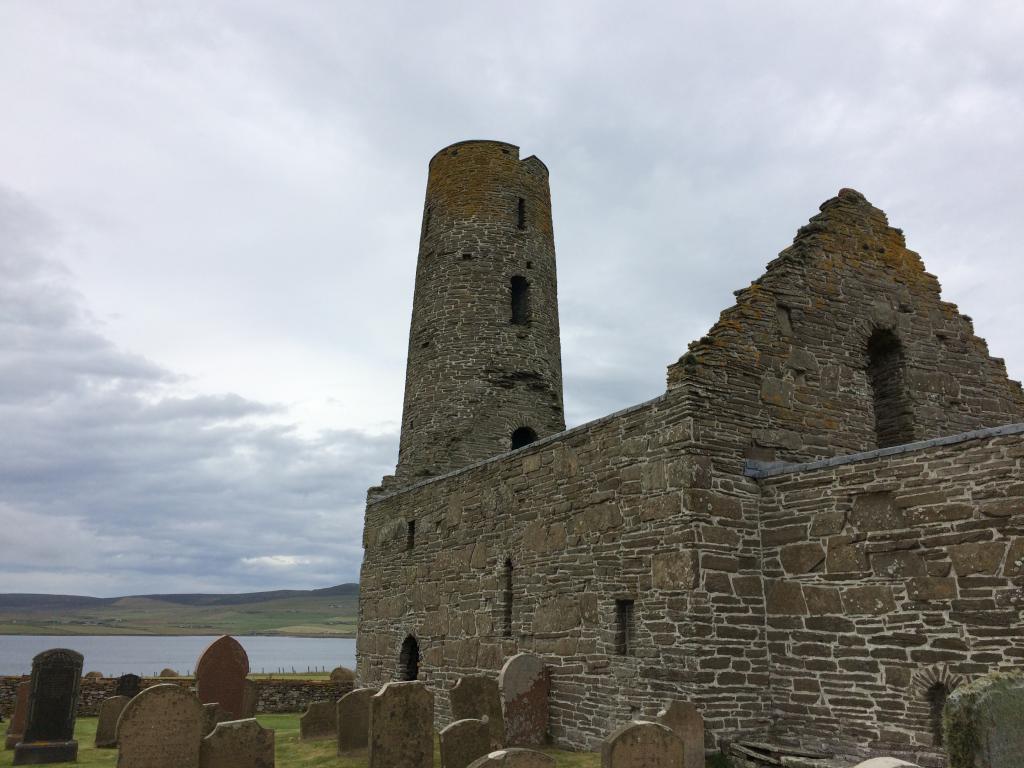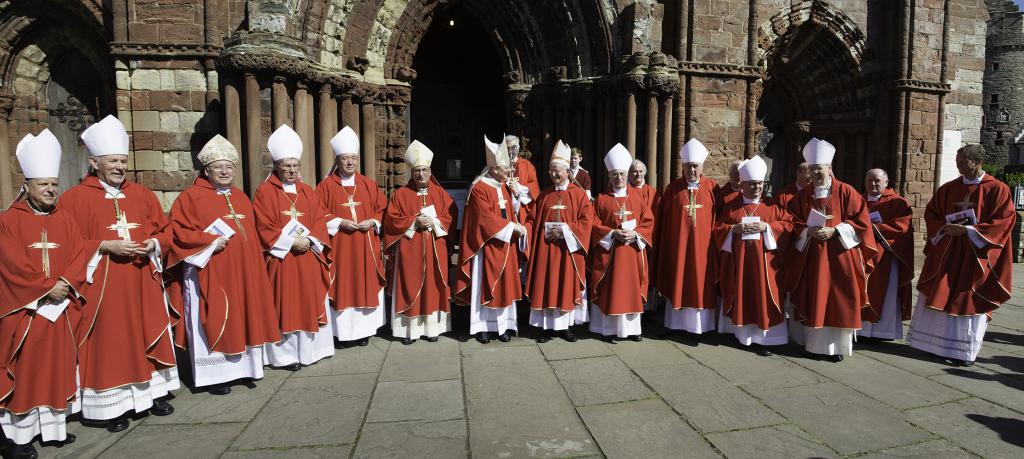by Bishop Nicholas Hudson
‘The biggest gathering of bishops and archbishops in Orkney’s history’ That was how BBC Scotland described the celebration to mark the 900th anniversary of St Magnus’s martyrdom. I felt very privileged to join three archbishops and eight bishops in St Magnus’s Cathedral, Kirkwall, on the last Sunday of July for a Mass to commemorate the supreme sacrifice offered by this saint of Orkney on the Isle of Egilsay in 1117: Earl Magnus Erlendsson, grandson of Earl Thorfin, greatest of the Orkney earls.
The whole Bishops’ Conference of Scotland was present. They rejoiced in the presence also of bishops from Norway, Denmark and (me from) England not least because Magnus was related to the medieval kings of Norway; the Orkney Islands had been Christianized by Norway; and Norway, Denmark and England had all been united under King Canute in the eleventh century. The Viking Magnus was and remains the most illustrious witness to the new-found faith of Canute’s Anglo-Scandinavian Empire.

Indeed, the Orcadian poet, George Mackay Brown, described Magnus as ‘the first Orkney man of rank to take the new religion seriously’. It was reading Mackay Brown’s novel ‘Magnus’ in the 1990s that I first encountered this saint who sacrificed everything for the sake of the Kingdom of Heaven at the very furthest reaches of the United Kingdom of Great Britain and Northern Ireland. I was touched, in reading about Magnus, to discover he was a powerful prophet of both peace and mercy.
He showed his peace credentials in a most dramatic way when, as a young man required to join in a Viking raid on Anglesea, he refused to bear arms but sat rather in the prow of the longship armed only with the psalter from which he recited psalms of peace: he would not allow himself to be forced to kill a single innocent Welshman. His continuing prophetic power was brought home to us pilgrims when we took a boat out to Egilsay, the island of his martyrdom. Some ten bishops concelebrated with Archbishop Tartaglia of Glasgow a votive Mass for peace in the ruins of the 12th century church; and Bishop William Nolan of Galloway preached on Magnus’s enduring witness to peace and reconciliation. Bishop Nolan reminded us of how Magnus had come to this lonely place to reach out the hand of peace to his cousin Earl Hakon; and of how Magnus had passed his last night on earth in prayer inside the church which stood on this very site. I was moved, just before we departed Egilsay, to discover, with Archbishop Tartaglia and Bishop Gilbert of Aberdeen, a memorial with links to Westminster: a cairn ‘erected in 1937 by the Rector and congregation of the church of St Magnus the Martyr by London Bridge ... to mark the traditional spot where Earl Magnus was slain’.
It was in the very face of death that Magnus showed the depth of mercy which lay in his heart. Magnus was Earl of Orkney, a title he shared with Earl Hakon. The reign of the two earls amounted to a long and bitter struggle. When matters had reached an impossible impasse, they agreed to meet on Egilsay to resolve their differences. It was Good Friday. Hakon came much more heavily armed since he had resolved, in fact, to kill Magnus. The Orkneyinga Saga recounts how Magnus’s chief concern was not for his own life but rather for Hakon’s soul. Magnus would do anything to save his cousin from the eternal stain of murder on his soul. Magnus offered to go on pilgrimage to the Holy Land and never return, to be imprisoned in exile, or to be blinded or maimed and cast into a dungeon. But Earl Hakon was persuaded by his chieftains to accept none of these; and instead had his cook Lifolf kill Magnus, on Easter Sunday 1117, with a great and grievous axe-blow to the head.
Entering St Magnus’s Cathedral for Sunday Mass on 30th July 2017, at the climax of our pilgrimage, the procession of bishops paused at a pillar. In this pillar were found a century ago the bones of a man whose skull had indeed been torn asunder by a hefty blow: relics lost at the Reformation but revered now as those of St Magnus. ‘Unless a grain of wheat falls on the ground and dies it remains only a single grain; but, if it dies, it yields a rich harvest’, proclaimed the deacon in the Gospel. We had sensed in our pilgrimage how Magnus continues to yield a harvest of peace and mercy 900 years after he made the supreme sacrifice. The Bishop of Aberdeen chose to say that, ‘When Orcadians gather here in 2117 to celebrate his thousand years, they will say we did well in 2017 to mark this anniversary!’
I bade farewell to Orkney, Stromness and the Old Man of Hoy with a deep sense that the harvest yielded by Magnus’s generosity will indeed continue to bear fruit long and abundantly through the century that lies before us. ‘Several times a day,’ wrote Mackay Brown in the final line of his autobiography, ‘I say, ‘St Magnus, pray for us’.’ Since returning from pilgrimage I find myself doing the same, several times a day.
Photo of Bishops by Sabrina Maguire

